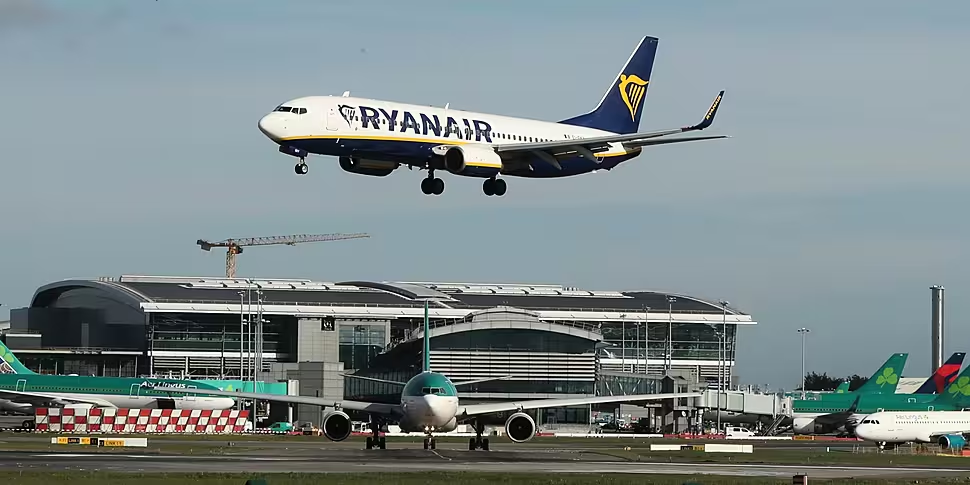Drones trespassing at Dublin Airport will be brought down using radio frequency jamming or other electronic means.
Cabinet has given the go-ahead for the DAA to purchase the counter-drone technology.
The measures used will be non-kinetic - meaning radio jamming or other technology will be used to return the drones to the ground.
The DAA has been instructed to "select the most appropriate system for the immediate to short-term pending a deeper analysis of medium to longer-term solution."
 A sign warning against drone use at Dublin Airport in February 2019. Image: Sam Boal/RollingNews
A sign warning against drone use at Dublin Airport in February 2019. Image: Sam Boal/RollingNewsApproval was also given to instruct the DAA to operate the technology in the immediate to short-term "as an emergency measure."
The Government has said this will bring "urgency and clarity" to the DAA's role in the selection, purchasing, deployment and operation of a counter-drone system.
The cost of the system at Dublin Airport will be met by DAA.
It is thought the new drone system will be in place in the coming weeks.
Consideration is also to be given for "an appropriate existing State agency" to be chosen to select and operate both drone detection and counter-drone solutions no later than July 1st.
This will take into account the need to protect other airports, as well as critical national infrastructure.
Kinetic v Non-Kinetic
There are a range of counter-drone systems available - including systems that physically capture, damage or destroy a drone - known as kinetic systems.
These systems can carry risks and can be ineffective against drones that move too quickly or unpredictably.
They may also present legal issues around the use of force and causing damage to property.
Most of the commercially available systems proposed for use at airports use radio frequency jamming or other electronic means, known as non-kinetic.
Typically these cause a drone to return to its operator or to land at a designated safe site.
The DAA has been examining non-kinetic systems, and has also been seeking the designation of a body to operate the system.
Drone disruption has seen flights grounded at Dublin Airport six times in the last six weeks.









